Jack the Ripper Victims Series by Alan M. Clark Book Tour and Giveaway :)
Alan M. Clark’s Jack the Ripper Victims Series is comprised of five novels, one for each of the canonical victims of the murderer. These stories are not only meant to appeal to those interested in the horror that was the Autumn of Terror, but also those interested in the struggles of women in the 19th century. They are well-researched, fictional dramatic stories meant to help readers walk in the shoes of the victims and give a sense of the world as each of the women may have experienced it. The timelines for the stories run mostly concurrently, so it doesn’t matter in what order the books in the series are read. They are simultaneously drama, mystery, thriller, historical fiction, and horror. They are novels concerning horror that happened.
A Brutal Chill in August
The First Victim of Jack the Ripper
by Alan M. Clark
Genre: Crime Horror
Publisher: IFD Publishing
Publication Date: December 7, 2019
We all know about Jack the Ripper, the serial murderer who terrorized Whitechapel and confounded police in 1888, but how much do we really know about his victims?
Pursued by one demon into the clutches of another, the ordinary life of Mary Ann "Polly" Nichols is made extraordinary by horrible, inhuman circumstance. Jack the Ripper's first victim comes to life in this sensitive and intimate fictionalized portrait, from humble beginnings, to building a family with an abusive husband, her escape into poverty and the workhouse, alcoholism, and finally abandoned on the streets of London where the Whitechapel Murderer found her.
With A Brutal Chill in August, Alan M. Clark gives readers an uncompromising and terrifying look at the nearly forgotten human story behind one of the most sensational crimes in history. This is horror that happened.
Amazon * Apple * Apple Audiobook * B&N * Kobo
Chapter
21
A
Need for Worry
Polly took books, paper, and pencils to the Dews family lodging to help her teach Estell to read and write. Clearly impatient as he waited through the first lesson, Tom paced quietly. Even so, he didn’t show an ill-temper. “Thank you, Polly,” Estell said. Tom smiled. “My little sister, turned bookish. Look at your happy lamps.” Bashful, Estell punched him lightly in the chest. While the girls got ready to go out, Polly spoke to Tom quietly so the others couldn’t hear her. “Bill has caught me out three times now. He has forbidden me to drink. I cannot go to pubs any longer.” “He doesn’t know how to find you here,” Tom said. “You’ll have your drink here.” For fear that he might take his fine hammer to her husband, Polly didn’t tell Tom about Bill’s threats of violence. Before leaving for market with Nancy, Estell placed her hand on Polly’s pregnant belly. “Your child has got big. Don’t let Tom poke a hole in her.” Tom swatted at Estell, but she dodged out of the way. “You shall not talk like that!” “Why not?” Estell said. Polly liked the girl’s pluck. She smiled, realizing that Estell had referred to her infant as female. She probably looked forward to having another little girl around. “Young ladies ought not speak of such things,” Tom said, eyes wide with outrage. Polly made a calming gesture toward him, while Estell stood with her hands on her hips. “Oh, that’s a rule, is it?” the girl said. “Well, if you needn’t follow the rules, why should I?” She saw Polly smiling and grinned. “I know what you two are about. I like Polly, and want her baby to be safe.” Tom covered his face with a hand, groaned, and turned away. “I shouldn’t worry,” Polly said. “We won’t hurt her.” “Somebody has to worry,” Estell said, too reasonably. She took Nancy by the hand, grabbed her basket and sack, and left the room. Yes, the child on the way was a matter Polly hadn’t fully sorted. If Bill found out about her adultery and divorced her, he might require her to turn her unborn over to him after the birth. She wouldn’t want the child to grow up without a mother, and yet, she thought resentfully, the infant would prolong the years she must remain with Bill. Perhaps she would be better off if he took the child and divorced her. She had considered making certain Bill discovered her adultery. The potential consequences for her choices and actions seemed to grow increasingly complicated and difficult to consider. How could the happiest time in her life also be the most distressing? Knowing the infant had no responsibility for her feelings, she said a prayer for her baby, followed by the penitent prayer. For the well-being of her unborn, she must keep Tom a secret, but that didn’t mean she’d give him up.
Music Video
The song sung by the ghost that haunts Mary Ann “Polly” Nichols
This series started off on a great foot in my opinion. Polly is just a normal girl from a poor family whose mother is gone and it's just her and her father and brother. She must work to help the family survive, but as she grows up she finds it harder and harder to stay away from the drink, which inevitably ruins her entire life. I really liked Polly as a character, she was very complex and being in her mind was sad but also very interesting at the same time. After Polly marries and her husband starts to beat on her, she takes even more to the drink, until the point she has to leave everything she knows behind and try to make it on her own. And of course this is where the prostitution becomes a central part of her life. I would give this one 5 stars :)
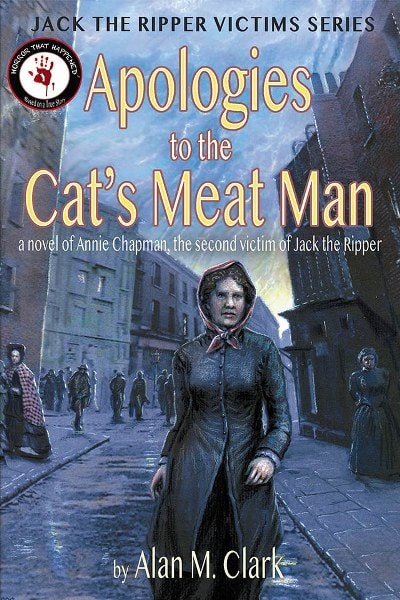
Apologies to the Cat's Meat Man
The Second Victim of Jack the Ripper
Publication Date: June 9, 2017
This novel is part of the Jack the Ripper Victims Series. Each novel in the series is a stand-alone story.
Annie Chapman led a hard, lower class life in filthy 19th century London. Late in life, circumstances and and her choices led her to earn her crust by solicitation. After a bruising brawl with another woman over money and a man, she lost her lodgings and found herself sleeping rough. That dangerous turn of events delivered her into the hands of London's most notorious serial killer, Jack the Ripper.
Contrasting her last week alive with the experiences of her earlier life, the author helps readers understand how she might have made the decisions that put her in the wrong place at the wrong time
Chapter
6: Cat’s Meat
Around age twelve, Annie cut her right hand while helping her mother slice bread for an evening meal. Over the ensuing muggy summer days, the wound became red and hot. The hand swelled and the wound began to suppurate. Early evening of one of those days, when their room above the cobbler shop had grown unbearably stuffy, she lay miserable and wet from sweat in bed, trying to ignore the throbbing pain in her right hand, and an increasing need to get up and use the chamber pot. “You must get better so we can play Old Maid,” Emily seemed to say to the doll cradled in her lap, though clearly she meant the words for Annie. The two sisters didn’t get along most of the time, possibly because Emily knew Dadda looked upon Annie as his favorite. Still, she sat in a chair beside the bed and held Annie’s left hand. “I’m no good alone, and Mum’s too busy to play.” Their father came clomping up the stairs. Annie heard him hop over the two rotten treads beneath the roof leak and the room shook a bit. She ceased to moan and writhe for fear of disappointing him. Mum, preparing supper, greeted Dadda, then he moved to the bed to have a look at Annie. Over top the odors of old leather and shoe black, he smelled most strongly of drink. “If it worsens,” he said, turning toward Mum, “she’ll lose the hand.” “No, Dadda!” Annie cried as he turned back to her. Emily made a face and climbed down from the chair. She dropped the doll as she backed away toward Mum. Hot tears poured from Annie’s eyes. She shifted uncomfortably in the bed and the rough straw inside the mattress bit into her painfully. Her bladder let go and she urinated there in the bed. He would discover the urine later, but she could not worry about that yet. “Should they take your hand,” Dadda said, “they’ll give it to the cat’s meat man. You don’t want that, do you?” Emily buried her face in her mother’s skirts. “He’s teasing you,” Mum said. “Don’t believe your father.” Busy, her defense of her daughter was weak and did not prevent the girl’s imagination from providing further torment. Annie saw the cat’s meat man, Mr Stewart, in his broad, brightly colored neckerchief, selling her severed fingers, dyed green and stabbed onto wooden skewers, to Mrs. Salter, who lived in the building next door. The woman kept a dog and a cat, and bought meat regularly from Mr. Stewart to feed her animals. Thinking that one hand might satisfy the takers as well as the other, Annie frantically tried to pull herself together enough to say, “Tell them to take the other one, Dadda. It doesn’t work as well.” Sobs came out instead, drowning in the salty fluids of her mouth and nose. “Cease your blubbering, girl,” Dadda said. “I’m trying to make you fight for that hand. We would not give it to the cat’s meat man.” Then he smiled with mischief. “Yet if you don’t fight to keep it, he may come in the night for it all the same. I’ll leave the padlock off the door to make it easier.” “You are a drunken lout, George Smith,” Mum said, “terrorizing your own young the way you do.” She threw a wooden spoon. The implement smacked into Dadda’s head with a loud knock and bounced off. Unfazed, his mischievous smile remained. Too late, Mum moved to settle Annie’s fears and calm her. Although the wound healed and she kept her hand, afterward she knew she wasn’t up to the hardships life would throw at her. As she grew, Annie found her squeamish and fearful response to the world an increasing source of distress. She would have to become someone else if she wanted to survive. The cat’s meat man seemed to follow her around and pop up in her imagination when Annie felt vulnerable.
Book Trailer
https://youtu.be/oDKsC9KJ3RI
In this second installment of the Ripper series, we get to meet Annie, the next victim. Although I really love the storyline and the way it was written and even though Annie is a great character, I was not fond of her AS a character. She seems to be very selfish and sometimes cruel on purpose and her thoughts are solely focused on her. I just didn't find her as sympathetic as Polly. But that's okay because it was still a great book! Her story was quite different from Polly's; she did not have family, she was relying on prostitution from almost the beginning of the book by lying with a man who also visited other women and he took care of them. At the one point she goes to the workhouse and knows she is not sick compared to the other people, but watches as someone leaves and rushes in to get a spot. I am glad I read about her, she did have an interesting story. I can't wait for the next book!
Say Anything But Your Prayers
The Third Victim of Jack the Ripper
Publication Date: June 11, 2017
This novel is part of the Jack the Ripper Victims Series. Each novel in the series is a stand-alone story.
An imaginative reconstruction of the life of Elizabeth Stride, the third victim of Jack the Ripper. The beast of poverty and disease had stalked Elizabeth all her life, waiting for the right moment to take her down. To survive, she listened to the two extremes within herself--Bess, the innocent child of hope, and Liza, the cynical, hardbitten opportunist. While Bess paints rosy pictures of what lies ahead and Liza warns of dangers everywhere, the beast, in the guise of a man offering something better, circles ever closer.
Author’s
Note—The Ripper’s London
This is a work of fiction inspired by the life of Elizabeth Stride, a woman believed to be the third victim of Jack the Ripper. For purposes of storytelling, I have not adhered strictly to her history. I have assigned to my main character emotional characteristics and reactions that seem consistent with her life and circumstances. I’ve addressed puzzling events in Elizabeth Stride’s life, and a mysterious confusion that occurred during the coroner’s inquest into her murder concerning her identity. To be clear, this novel is not about Jack the Ripper. The series itself is not about the killer. Instead, each novel in the series explores the life of a different victim. I wrote this note in the month of October, a time for scary fun. I truly enjoy the cute horror of Halloween and a good, over-the-top zombie film, yet as one who has always been intrigued by the dark and disturbing, as a practitioner in the horror genre, a professional writer for almost two decades, and an illustrator for almost three, sometimes that sort of fun scare falls flat. My interest has been drawn over time to the real horror of history and the lessons to be learned from it. Long ago, when I first learned of Jack the Ripper and the murders associated with the killer, I was, as most everyone is, intrigued by the endless speculation about who he might have been (I use male pronouns when referring to him merely because of the name Jack; though we don’t know the gender of the Whitechapel Murderer). The more I read about the murders and the various theories, the less interested I was in the killer and the more intrigued I became with the environment in which the murders took place. As I learned more about Victorian London and how rapidly it changed due to the industrial revolution, the more interesting I found the lives of those who lived there at the time. Although I couldn’t learn much about the killer, I could gain some knowledge of the five female victims. Potentially, there are more than five, but those considered canonical victims are Mary Ann Nichols, Annie Chapman, Elizabeth Stride, Catherine Eddowes, and Mary Jane Kelly. Coroner’s inquests were held to determine the cause of death for each of the women. The inquiries are essentially trials, with juries and witnesses to help make a determination about the manner of a victim’s demise. The verdict in each of the five cases was "Wilful murder against some person or persons unknown." The words, actions, movements, and motivations of each of the women are most clearly known to history closest to the time of their deaths because of the testimony of the witnesses called during the inquests. In some cases, such as that of Elizabeth Stride, the last couple of hours were recounted in detail, and in other cases, such as that of Catherine Eddowes, we have a good idea what she did within several days of her death. The farther we go into the past away from the hour of their deaths, however, the less detailed and the more generalized is the information about them. Within the few years prior to their deaths, all five had suffered real hardship—all had engaged in prostitution to survive, most, if not all, had been active alcoholics, and most had spent time in the dehumanizing workhouse system. In Victorian England, the Industrial revolution had led to large-scale unemployment, much the way the Tech Revolution has done in America today. Victorian London, much like large American cities today, suffered from overcrowding and large numbers of homeless. We can see a modern reflection of the victims of Jack the Ripper in the homeless of twenty-first century America. Much of the cause of that homelessness went unseen in Victorian times, as it does now. With the rise in the numbers of the homeless, then as now, people had a tendency to shy away from the problem. My natural inclination is to avoid knowing why so many people are hungry and without shelter. I want to look away, and I don’t want to look away. My experience is that many people are just as ambivalent. Many of the homeless are intoxicated much of the time or begging for the means to become intoxicated. I can easily become disgusted with the endless need of the addicts among the homeless. I could justify my righteousness by blaming their lack of hygiene, and their crimes of desperation. However, I am a sober alcoholic and expect myself to have compassion for them, even when it doesn’t come naturally. There, but for providence, go I. Although I avoid those who are clearly intoxicated, on occasion I’ve asked someone begging on the street for their story. Most aren’t good at telling a story, perhaps because they are rarely asked to tell one. Even so, from what they say, I always get the sense that they have had happier times, that they have capabilities, and that they have aspirations involving their own personal interests and those whom they love. Worse than the surface irritation of having to deal with a person who might be slovenly, dirty, inconvenient, or in-my-face is the emotional stress of considering the plight of an unfortunate person. My immediate response is to want to look away. I speak of my experience to take responsibility for my reactions, yet I’m not alone. We find it easy to scorn the beggars on the streets and then project that disdain on all homeless people, further isolating them. As a result, the down and out are less likely to find help when in danger. If they are seriously harmed or killed, fewer people step forward to try to find out what happened. Those who prey upon the homeless more easily get away with their crimes. The same was true for the down and out of Victorian London. What events in the lives of the five Jack the Ripper victims led to their demise on the streets of London? How much of the way they lived was a result of the choices they made? What was beyond their control? Were they chosen at random by their killer, or did he choose them because he knew that fewer people would step forward to find out what happened to them? We don’t have good, solid answers to these questions. My impression is that their choices had something to do with securing their wellbeing, however, much of their existence was beyond their control. The environment of London itself was a danger. Literally hundreds of thousands of Londoners were killed by the pollution in the air, water, and food. New industries popped up everywhere to support the burgeoning population and to exploit the cheap labor market. Small factories occupied converted tenements or houses that once held families in residential neighborhoods. Sometimes, only a part of such a tenement or house was occupied by industry while the rest still functioned as a residence for individuals or families. With an increase in the use of chemistry, and with little knowledge of the damage many chemicals inflicted upon the bodies of those exposed to them, industries, such as match making, destroyed the lives of their workers and those living within close proximity to production. Those who suffered often did so without knowing why until it was too late. Matchmaking is only one example of the industrial poisoning of Londoners. Deadly chemicals were everywhere. They were used in medicines and in prepared foods as preservatives. Madness abounded, if not as a result of the emotional hardships of life, then from chemical damage to the brain. A life of poverty in London was slowly killing all of the Ripper’s victims. Survival within that environment is the story that intrigues me. Those are lives I can relate to because I see parallels with life in my own time. Regardless of whether the Ripper’s victims had few opportunities to live better lives or were responsible in large part for their predicaments, their legacy is pitiful and poignant. Not the cute horror of Halloween perhaps or the over-the-top-turned-almost-cartoon horror of slasher and zombie films, the stories of the five women are full of emotional content, conflict, and drama. What happened to the victims of Jack the Ripper is true horror, and in the telling of those tales we are reminded that the more things change, the more they stay the same. When I was growing up, my mother had a strange way of watching scary movies on television with the family; she’d stand in the hallway beside the living-room, peeking around the corner at the TV, ready to run away if the film became too scary. Is that the way we as a society treat true horror? We all love a fun scare, but when the suffering becomes too real, we want to run away because it’s painful to witness. I suppose I’m saying that if fewer of us looked away, if we had the courage to see, there might be less actual horror in the world. So here’s to remaining in the living-room of life with our eyes wide open. And so to the life of Elizabeth Stride.
—Alan M. Clark
Eugene, Oregon
Of Thimble and Threat
The Fourth Victim of Jack the Ripper
Publication Date: September 28, 2017
In Victorian London, the greatest city of the richest country in the world, the industrial revolution has created a world of decadence and prosperity, but also one of unimaginable squalor and suffering. Filth, decay, danger, sorrow, and death are ever-present in the streets. Catherine Eddowes is found murdered gruesomely in the city's East End. When the police make their report, the only indicators of her life are the possessions carried on her person, likely everything she owned in the world. In Of Thimble and Threat, Alan M. Clark tells the heartbreaking story of Catherine Eddowes, the fourth victim of Jack the Ripper, explaining the origin and acquisition of the items found with her at the time of her death, chronicling her life from childhood to adulthood, motherhood, her descent into alcoholism, and finally her death. Of Thimble and Threat is a story of the intense love between a mother and a child, a story of poverty and loss, fierce independence, and unconquerable will. It is the devastating portrayal of a self-perpetuated descent into Hell, a lucid view into the darkest parts of the human heart.
Excerpted
from Chapter 6: A
Red Gauze Neckerchief
They traveled in an omnibus to Newgate Prison for the hanging. The vehicle was so crowded Conway placed Katie in his lap. A woman sitting across from them glared disapprovingly. She’s dressed to the nines, while the man next to her is square rigged. He’s with her, but they should be more at home in a carriage. As they were beginning to get stares from others, Conway stated loudly that she was his new bride. He held up his hand to display as proof a brass ring on his left ring finger that she had not noticed before. Katie blushed. Laughter and good cheer filled the coach. While the gentleman next to her smiled, the elegantly-dressed woman turned her face away and buried her nose in a sachet. Her suddenly pale skin, pinched lips and rolling eyes suggested she might faint from the foul order of unwashed bodies surrounding her. She must not be a Londoner. Everything has smelled so fresh and new since the end of The Great Stink. Conversations among the passengers became louder and less private, inviting all within to respond and contribute. Through all the talk, it became clear that many of the passengers were on their way to the hanging. As news and witticism were shared, it was as if all within the coach were together as one on a great adventure. A jolly fat man named Ellis bragged that he and his wife and eight children, all of whom he introduced one at a time, had managed to get on the same omnibus. He told a humorous tale of a previous hanging they had attended and of the dreadful fate of the condemned at the hands of body-snatchers and medical gentlemen. His stories made it more difficult to imagine where they were going and what it would be like. Conway had asked Katie to help him sell chapbooks to the crowd attending the hanging of Michael Buseman. The chapbook consisted of several broadsheets folded together, containing information about the man’s life, crime and trial and a gallows ballad Conway had written meant to be sung to the popular tune, “The Siren’s Harp,” by Arnold Scott. The chapbooks were to be sold for a penny apiece. “If we work hard,” he said, “we might sell a thousand copies. You’ll earn a twentieth of the proceeds.” That’s four shillings and more! An erection grew in Conway’s trousers as the coach bumped along. If he’ll share that with me, what more will he share? He paid for us to ride the omnibus! He’s a generous soul with income more than sufficient for his needs. Perhaps I will have a new life. When the vehicle bounced over uneven road, she allowed it to cover a little extra movement of her own against Conway’s lap. Clearly aware of what she was doing, he planted a moist kiss on her lips. Katie smiled. Her heart raced and she struggled to catch her breath as the coach erupted in cheers. An image of Aunt Elizabeth’s angry face came unbidden. She will be so angry with me, but I don’t care. I’ve taken so little time for myself.
~ ~ ~
Throngs of people filled the street where they departed the omnibus near Newgate Prison. Never had there been so much confused noise. Conway paused to tie a beautiful red gauze silk kerchief around Katie’s neck. “There you are,” he said. “A fine billy to enhance your beauty and make you easier to find in the crowd should you become lost.” “A gift?” she asked. “It’s too much.” No, he might take it back! “I intend you shall work it off.” He said with a warm smile. “Is it a romantic gesture,” Katie asked, with beguiling eyes, “part of a business deal or merely useful?” “Couldn’t it be all three?” Conway asked. He is clever indeed. “Yes, I suppose it could.” Conway touched her cheek tenderly before turning back to business. “We’ll make our way along Newgate Street to Old Bailey.” He pointed toward the corner of the ugly stone prison building. “That’s where my printer will meet us with my chap books.” The people were a river of conflicting currents filling the street. Some time would pass before Katie and Conway arrived at their destination. “Is everyone in the world here today?” she asked, her eyes wide. “No, lass,” he said with a straight face. “So many didn’t know you were coming.” Katie grinned and then he did as well, with a slight bow to his head and a twinkle in his eye. Few gentlemen and ladies occupied the street. Most of the crowd were laborers, with a few vendors mixed in, and children were everywhere, shouting at the top of their lungs and moving swiftly between the adults. Eyes were everywhere. While some expressed a festive mood, other eyes held anger, mistrust, lust or even hatred. The whole was a pandemonium of sound, color and movement. Dizzy, Katie closed her eyes momentarily, but Conway caught her by the arm as he began to move. “Keep your wits about you,” he said. “The crowd is full of pickpockets, ruffians and thieves who cause no end of mischief. Don’t worry about what you’re stepping on. Keep your eyes up and looking around. Don’t let the children get too close. They’ll rob you blind and you won’t know it until it’s too late.” Katie followed, doing as she was told. I have nothing of value but the silk neckerchief. If they can take it without me knowing, they can have it. “When we arrive at Old Bailey, you’ll see the portable gallows. They erect it in front of the Debtors’ Door. We’ll not get too close to it because that’s where the crowd does its worst violence. We’re not here to see the man dangle. We’re here to sell poetry!” The printer, a thin, ink-stained man, who smelled of bad fish and had no teeth, stood at the corner of Newgate and Old Bailey as promised. He passed Conway several bundles of chapbooks tied with yellow string. Once paid, the man disappeared into the crowd. Conway cut the string on one bundle and handed it to Katie. “You’re to shout ‘A Sorrowful Lamentation of Michael Buseman, just one penny,’” Conway explained. “If we remain at this corner, the crowd will move around us. We’ll stand back to back. You’ll face south. I’ll face east. Keep the extra bundles beneath you, under your skirts. If someone gives you trouble, I’ll be right here. When you make a sale, turn and discreetly place the penny in this slit.” He indicated an intentionally split but finished seam in the side of his long brown top coat. “Do you understand?” “Yes,” she said. Again, her heart raced. Butterflies fluttered in her stomach and a thrill ran along her spine. Was it fear or pleasure? She couldn’t decide. It’s always like this with Conway. Katie had hardly spoken her sales pitch when a young man offered a shiny, new penny. As sales of the chapbook became routine during the next few hours, she became calm again. Too calm, perhaps, as her lack of vigilance may have shown in her eyes. A man in a long, blue coat and black bowler hat stepped up, made as if to draw a coin from his pocket and instead came up with a knife. Brandishing his weapon, he gave her a hard look, then grabbed for the bundle of chapbooks in her left hand. Are they that valuable? At a penny apiece, they were, if he could sell them. Katie was not going to let him take them. She held on and cried out, but perhaps she could not be heard in the surrounding maelstrom of noise. The man swung with the knife, but Katie dropped down onto the bundles beneath her skirt and leaned away to the right and raised her left arm inside the arc of the weapon. Her wrist took a slice against the bone as the thief pulled back for another strike. Katie drew her arm away, rolled off the bundle onto the pavement, her hip grinding painfully against the table knife in its pocket under her skirt. She could use it for defense, but she wouldn’t be able get to it in time. She rolled again, then looked up to see Conway take a swing at the man. The expression of surprise on the thief’s face exploded into one of pain as Conway’s fist struck him in the eye. He staggered back, rebounding off a young couple holding hands and nearly knocking them down. The bowler hat fell from his head and he dashed off into the crowd. Conway helped her to her feet. Katie held up her bundle of chapbooks. “Good Girl. You defend my merchandise—” He stooped to pick up the bowler, which was old and worn, but much finer than his own hat. “—and win me a bowler too. Aren’t you a find?” His laugh was large and powerful and his eyes were those of a kind father. Katie blinked away rising tears of relief. Pride swelled in her chest as he looked upon her with such tenderness. Conway saw the wound on her arm and his features became pinched with concern. “You’re hurt.” Heart beat pounding in her neck, Katie’s ears buzzed and her vision, painting everything with unusually vivid colors and crisps edges, shivered with each pulse. Again, looking for quicksilver in her blood, she watched the rapid drip from her wrist while Conway took a white handkerchief from his coat. If the silver liquid flows now, he will think I am very special indeed. But what a silly thought! I must be out of my mind from the fear. He wrapped the handkerchief about her wrist to stanch the flow of blood. “There now,” he said. “You’ll be as good as new.” “I’m all right,” she said. “Let’s continue with our sales.” Truly, she didn’t want to turn away from him and lose sight of those warm eyes, but that was what he’d want. Midway through the afternoon of selling, a bell began to toll. A cry of “Hat’s off” went up and passed around the crowd. Some of the people became still and stood clutching their hats with their heads bowed. A commotion at the gallows drew most everyone’s attention for a time and then a great cheer rose up from the horde. After that the crowd slowly began to disperse. Conway’s coat was heavy, Katie was exhausted and her shoes were filthy with horse dung and other substances she could not identify. They had sold eight-hundred and seventy-nine copies of the chapbook. Conway was pleased. “If you are willing,” he said, “I’d like your help with sales again soon.” “I would help now if I could,” Katie said. “No, you must go home. I’ll collect you in a week for an execution at Southwark.” She did not look forward to the inevitable confrontation with Aunt Elizabeth. “But I don’t have to return right away.” “Yes, you do. I cannot take you with me. We must protect your reputation against the unkindness of the world.” His concern was thoughtful, but Katie was not happy about it. She was quiet as he escorted her back to her aunt’s home in the early evening, first riding the omnibus and then walking. Perhaps her five percent earning of the day’s sales would be sufficient to soften Elizabeth’s heart. When they arrived, sitting beside the back doorstep was her old travel bag stuffed to overflowing. It might have been taken! Katie plunged her hand into it and felt around. She took a deep breath and relaxed when her finger located her thimble. The bag held all her possessions except for her mother’s pillow. Katie tried the door, but it was locked. I have no home! Images of the workhouse, conjured by Emma’s descriptions, filled her head. Her knock at the door was rapid and loud. With no response, she ran to the front of the house. The door was locked. She knocked, and when no answer came, she rattled it mercilessly. Katie tried to look through the curtained windows when Conway caught up with her, toting her travel bag. “Come with me,” he said.
The Prostitute's Price
The Fifth Victim of Jack the Ripper
Publication Date: August 30, 2018
A novel that beats back our assumptions about the time of Jack the Ripper. Not the grim story of an unfortunate drunken prostitute killed before her time, but one of a young woman alive with all the emotional complexity of women today. Running from a man wanting her to pay for her crimes against his brother, Mary Jane Kelly must recover a valuable hidden necklace and sell it to gain the funds to leave London and start over elsewhere. Driven by powerful, if at times conflicting emotion, she runs the dystopian labyrinth of the East End, and tries to sneak past the deadly menace that bars her exit.
Although THE PROSTITUTE'S PRICE is a standalone tale, and part of the Jack the Ripper Victims Series, it is also a companion story to the novel, THE ASSASSIN'S COIN, by John Linwood Grant. The gain a broader experience of each novel, read both.
Author’s
Note: To Hell with Jack the Ripper
This novel, and the Jack the Ripper Victims Series of which it is a part, are not meant to satisfy curiosity about the identity of Jack the Ripper. Instead, they exist to take readers back in time to experience the circumstances in which those he preyed upon lived and suffered his crimes in Victorian London. Many of the place names in the novel—Stepney, Spitalfields, Shadwell, Whitechapel, Southwark, Clerkenwell, Deptford, Poplar, Shoreditch, Limehouse, Chelsea Embankment, Knightsbridge—are in the greater London area. Some are the names of districts or parishes or what were towns in their own right until they were swallowed up over time by the expansion of the city of London. They are all within ten miles of one another, most of them within easy walking distance. Having written novels about the first four victims, I found myself shying away from writing this one about the last victim, Mary Jane Kelly. With time, I realized that the crime scene photographs had discouraged me. At least two exist, one that is perhaps the primary, taking in the whole scene, the other a closeup. Much of the “trash” in the photos exists because the images now available are from photographic products that have deteriorated with age. Those materials would be going on 130 years old. The pictures have what looks like dust and scratches or perhaps water damage that led to mold, mildew, fungus. Whatever the cause, the deterioration has a very dirty look, making what is a disgusting scene, usually seen in a brown sepia-tone, look even worse. Taken in London’s East End in 1888, the images seem to speak accurately of what was a very filthy part of the world in the late Victorian period, indeed a place and time with some of the most impoverished people the world has known. Yet when the photos were first created, they probably had much less trash in them, and would have provided a clearer view of the victim. The mutilation of the corpse in the photo is so extreme that it somehow wounds my sense of human worth and dignity. The outrage of the wasted humanity is bad enough, but seeing those pitiful remains on a bed in a small, squalid single-room dwelling, I also suffer an odd claustrophobia, a sense of being trapped in that tight space at 13 Miller’s Court in Spitalfields, where true horror took place. With the dreadful feeling I get from the images, I didn’t want to begin the work on the novel about Mary Jane Kelly. I considered showing the pictures here, but decided that those who haven’t seen them are better off. Unfortunately, these words may pique the curiosity of some who will look for the images. Despite my revulsion, I have completed the series with this novel, and in a manner that took my distress over the crime scene photographs into consideration. “For all the murder victims forgotten in the excitement over the assholes who kill.” That is my dedication for A Brutal Chill in August, the novel in the series about the life of Mary Ann “Polly” Nichols, the first victim of Jack the Ripper. We know much more about the women he killed than we do about him. Likely, the women did not know the murderer. As most do, I employ male pronouns when talking about the Ripper merely because of the name Jack, though we don’t know for certain the killer’s gender. I have stuck to what history tells us about the women he killed as much as seems reasonable, while also trying to tell good stories. The available records that provide their reactions to given situations are limited, so we do not know what they said or felt in many cases. In broad periods of their lives we have mere outlines of their activities at best. Writing character-driven, dramatic representations of their lives, I have invented dialogue and emotional motivations for the characters that fit with their time and circumstances. Survival within the environment of Victorian England took a heavy toll on the lives of the women the Ripper targeted. The first four, middle-aged and struggling to survive on their own, had taken to the streets to earn as prostitutes. They were worn down and weakened by the time they met their killer. The fifth and final, Mary Jane Kelly, was a young prostitute, possibly twenty-five years old. What we know about those he murdered tells us something about Jack the Ripper and offers a glimpse of the world in which he and they lived. In most ways, he would have been as vulnerable as his victims in a dangerous, often merciless world. Just like them, he was probably aware of the need to maintain appearances and to achieve the highest social position possible in order to ensure survival in a swiftly changing environment. I presume he knew that eventually disease and death would claim him without ceremony and that he would die alone like everyone else. If he considered these things after what he’d done and what he’d witnessed of death, perhaps he experienced a pitiable fear something like what his victims knew. Most of us spend much of life feeling confidently alive, solid and incorruptible, not thinking about our demise, our eventual loss of facility and faculty, our loss of awareness and sense of identity and finally the decay of our flesh. Those of us who have not seen war, violent crime, or deadly disaster turn to face our demise slowly over many years as it dawns on us frightfully that we are like all those who have gone before us, that we all suffer and die. To see someone face that fear precipitously, the process demonstrated within moments, to be the playwright and director of that drama—that is what the Ripper experienced. Considering the crime scene photos that show the severe mutilation of the Ripper’s last victim, I have to wonder if the murderer could identify with the women he killed and feel their suffering. Having revealed to himself by his own cruel acts the heights of fear and pain, and the terrifying frailty and ephemeral nature of flesh and awareness, was his dread of a particularly intense nature? If his freedom or his life were never taken from him in answer to his crimes, did he at least suffer revelations of his own mortality? I would like to think that he did.
—Alan M. Clark
Eugene, Oregon
Book Trailer
https://youtu.be/9h3V9kVL2Ko
Author and illustrator, Alan M. Clark grew up in Tennessee in a house full of bones and old medical books. His awards include the World Fantasy Award and four Chesley Awards. He is the author of seventeen books, including twelve novels, a couple of novellas, four collections of fiction, some of them lavishly illustrated, and a nonfiction full-color book of his artwork. Mr. Clark's company, IFD Publishing, has released 42 titles of various editions, including traditional books, both paperback and hardcover, audio books, and ebooks by such authors as F. Paul Wilson, Elizabeth Engstrom, and Jeremy Robert Johnson. Alan M. Clark and his wife, Melody, live in Oregon. www.alanmclark.com Visit his blog: https://ifdpublishing.com/blog
Follow the tour HERE for exclusive excerpts, guest posts and a giveaway!
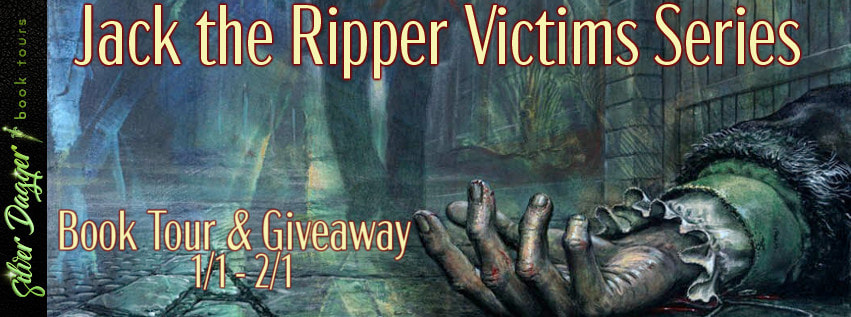
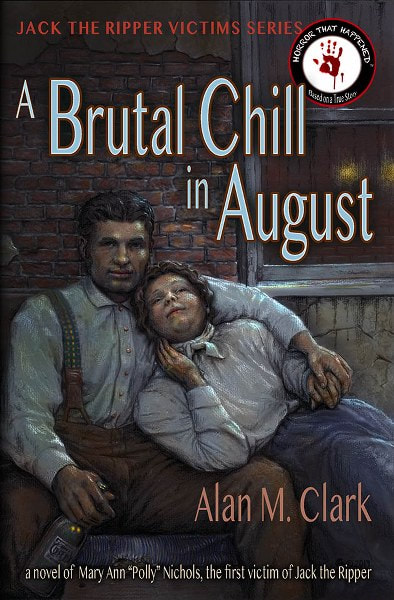


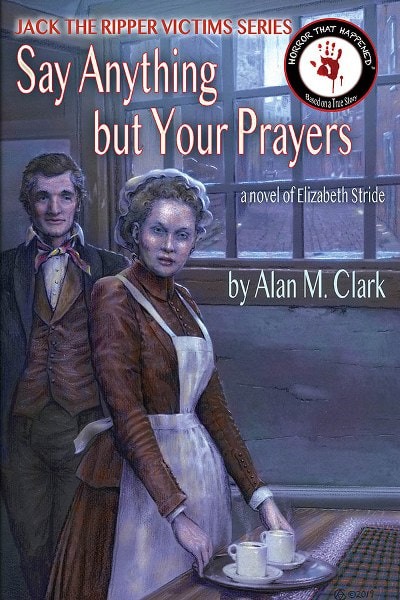
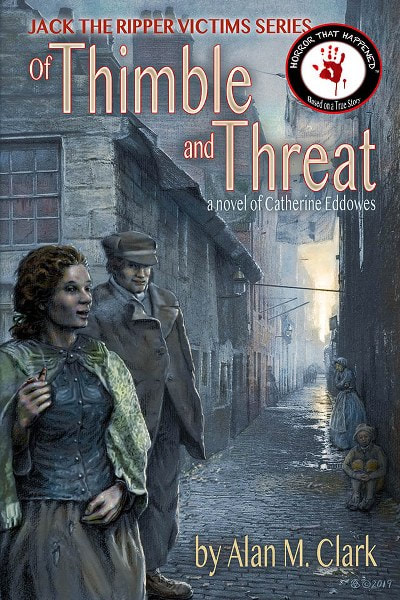
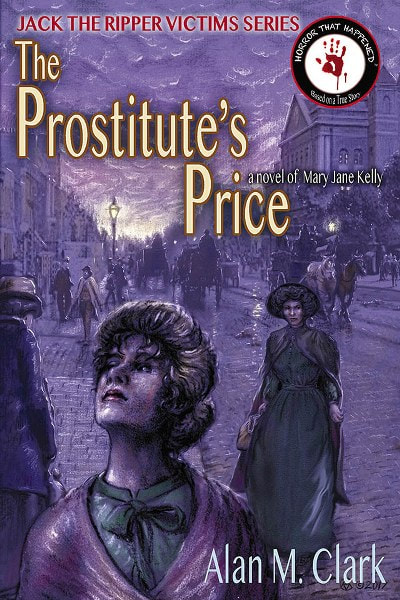

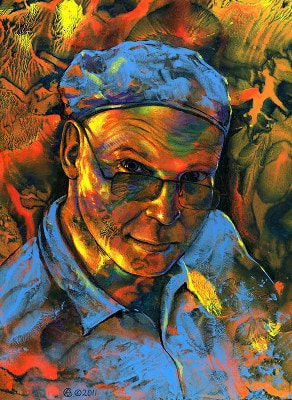



Comments
Post a Comment